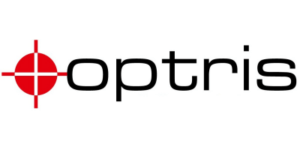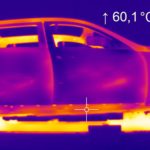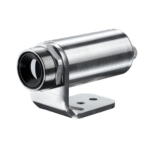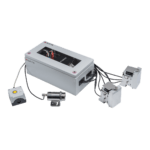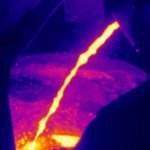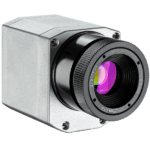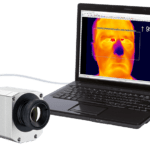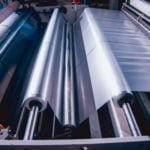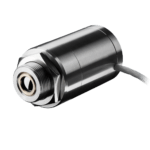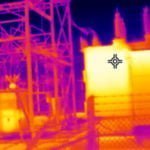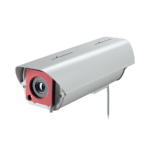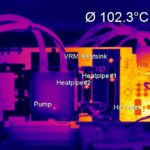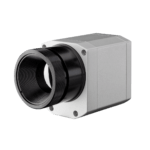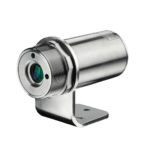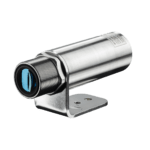Infrared cameras reduce scrap in the thermoforming process
The Gubesch Group optimizes the production of automotive exterior parts with the application of the infrared camera of the Optris PI Series. Consistent temperature profiles during the thermoforming process ensure high quality and increase customer loyalty.
The composite fiber sheets required for the deep-drawing process have a thickness of 2.3 to 3.5 mm and are reinforced with glass fibers. Before the plastic sheets can be formed into perfect panel parts, they must be heated. This takes place via low- and high-level heaters in a radiant field within the thermoforming machine.
After heating, the composite fiber sheets are pressed into the mold of a panel part in the machine, and then cooled. The handling time between heating and forming is minimized. In addition to the forming process, concurrent forming of functional groups (e.g. air inlet nozzles) takes place. In a further step, the panel part is cut by laser and finally shaped before being transferred to the end customer for assembly.
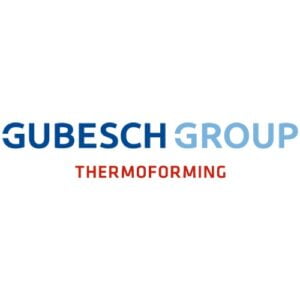
Our partner in the field of innovative thermoforming and injection molding technologies as a Full-Service-Provider.
Process optimisation is the primary objective
The primary objective for the Gubesch Group is an optimal process which ensures stable production, optimum cycle time, as well as minimal production defects. During the development phase, occasional burning of the panel parts occurred due to the temperature settings being too high or the formation of folds due to an excessively low temperature profile. Here, constant temperature monitoring for setting and regulating the radiant heaters presents the greatest challenge for the process.
Dr. Ing. Thomas Müller-Lenhardt, Head of R&D at Gubesch Group reports: “The initial application of a pyrometer on each side proved to be insufficient, since the temperatures vary too much across the complete cut material section. Fitting multiple pyrometers in a line was also considered. But the achievable resolution here would also be too low.”
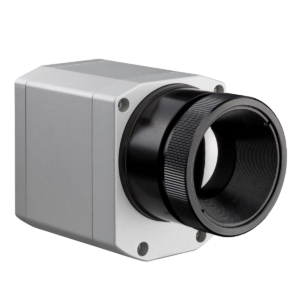
The IR camera optris PI 640 is flexible in use.
The optris PI infrared camera provides the perfect solution. Its wide-area temperature measurement covering the majority of the composite fiber sheet allows both individual values such as cold spots and hot spots as well as average values and temperature profiles across the surface to be displayed. One optris PI thermal imaging camera with a 64° wide-angle lens is installed in each of the top- and bottom heating section of the starter field.
Due to the proximity to the heating system, the front side of the camera experiences ambient temperatures of up to 315 °C – too hot for the optris PI without additional protection. The solution was to install the thermal imaging cameras in an additional water-cooled cooling housing as well as installing a decoupled plate in front of each housing (reflection of thermal radiation).
This enables a constant ambient temperature of 35 to 40 °C to be ensured for the thermal imaging cameras. In order to ensure that the maximum ambient temperature of the optris PI of 50 °C is not exceeded, the check of the internal camera temperature is done in Software optris PIX Connect.
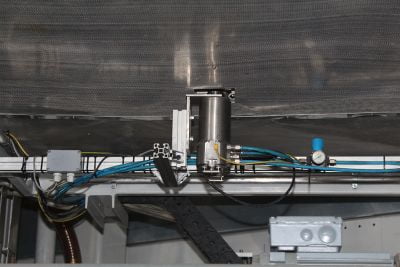
The CoolingJacket ensures a reliable use of the infrared camera.
Data evaluation and recommended actions from software programmed in-house
The evaluation of the temperature is done via the optris PIX Connect software. For the user, it provides comprehensive IR camera software, which analyses and documents the temperatures, as well as automatically controlling processes. The software enables video and snapshot recordings at up to 80 Hz and features a high degree of customization for customer-specific adaptations.
At the Gubesch Group, the data is forwarded via a COM port interface to a proprietary user interface. The software, developed by novo.design (Neustadt/Aisch), looks for new snapshots from the two cameras at defined time intervals. At the same time, the temperature values from both cameras are read out and buffered. The most important information is shown in a temperature diagram. A pre-defined upper and lower temperature limit enable the timely issue of alarms if the temperature is too high or too low.
“To make working on the machine easier, the alarm appears in a pop-up window together with an associated recommended action for the responsible plant operator. This means we can ensure the correct reaction at the plant.”, informs Thomas Müller-Lenhardt.
The cameras are connected with the computer via a USB interface. An additional interface on the camera is the Process Interface (PIF), which allows external trigger signals to be sent to the camera. The trigger interface allows automatic snapshots to be triggered using a voltage signal. The signal for this is acquired by the machine control system. The most recent snapshots of the individual plastic sheets are shown in a display history and are stored as part of the process documentation
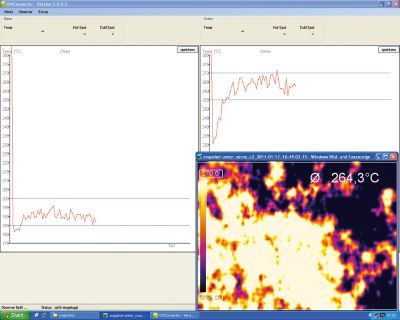
Thes software documents ans analyses the temperature data.
Optimum cycle times, reduced scrap volume
A clear advantage of the application of the optris PI thermal imaging camera at the Gubesch Group is the optimization of production through reliable temperature monitoring for setting and regulating the radiant heaters. The application of the PI thermal imaging cameras allows optimum cycle times of 90 seconds at maximum possible heating power to be achieved. This has allowed yield and productivity to be maximized.
“With a constant temperature profile,
the scrap in production was substantially reduced”,
explains Thomas Müller-Lenhardt, pleased with the improvement.
For the Gubesch Group however, the major advantage is ensuring high quality. The optimum heating temperature regulation allows the high quality demands of customers to be met, resulting in customer loyalty and an increased order volume.
The reliability of Optris products is convincing
“Choosing the optris PI was an obvious step for the Gubesch Group. Since pyrometers for folding units in bending processes were already well-proven in the business, reliable Optris devices were also selected for the new series production”, informs Andreas Theilacker, Regional Sales Manager at Optris. “The wide range of IR measurement devices, accessories and software options proved to be an advantage.”
Not only does Optris offer thermal imaging camera solutions for industrial applications (IP 67 e.g. also with industrial plugs), but also important components such as cooling housings, or simple integration into the plants via the USB interface. The license-free, comprehensive camera software for thermal image analysis and the free use of the software interfaces (COM port, DLL) to transmit relevant data to the user software were additional factors in selecting the optris PI thermal imaging camera for the application.
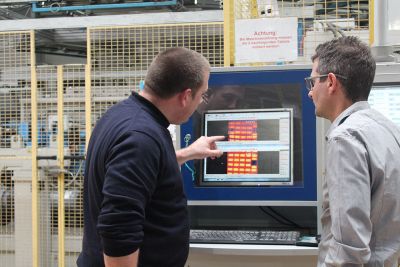
Advantages at a glance
- Display of the temperature profile across the plastic sheet
- Simple regulation of the radiant heater temperatures
- Cycle time reductions
- Attainment of the highest possible utilizationof the plant and production volume
- Minimization of production defects
- Ensuring high quality for customer satisfaction and loyalty
Authors
Dr. Thomas Müller, Gubesch Group
Head of R&D
Dipl.-Ing. Andreas Theilacker, Optris
Regional Sales Manager
Contact for Advice and Sales Worldwide
We offer comprehensive advice for your individual applications
Our experienced application engineers ensure competent and reliable customer service in the field. In addition, Optris works closely with numerous distribution partners worldwide.
International
Ferdinand-Buisson-Str. 14
13127 Berlin, Germany
Phone: +49 30 500 197-0
E-Mail: sales@optris.com
Internet: www.optris.com
Managing Director:
Dr.-Ing. Ulrich Kienitz
